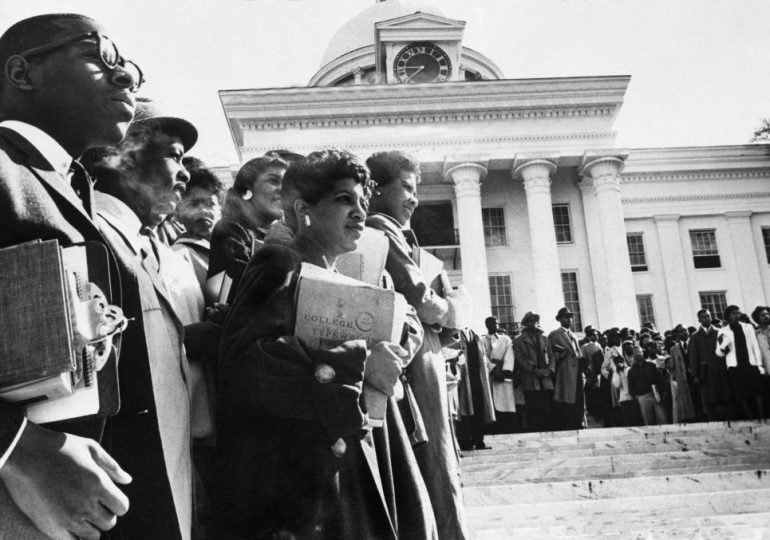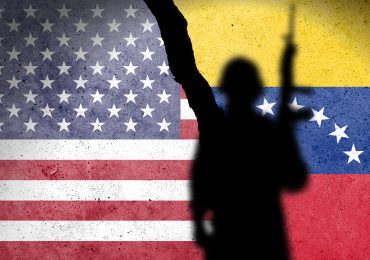Sixty-six years ago, the Supreme Court unanimously decided in NAACP v. Alabama ex rel. Patterson that compelling private organizations to disclose the identities of their members and donors violates those members’ First Amendment freedoms of speech and assembly. The court’s decision constrained Alabama’s efforts to facilitate the intimidation (or worse) of National Association for the Advancement of Colored People (NAACP) supporters and to oust the organization from the state.
[time-brightcove not-tgx=”true”]
Today, this 1958 ruling remains highly relevant as Congress and state legislators across the country debate campaign finance reforms that include compelled disclosure of donors.
The fundamental question at issue then and now is: can the government compel nonprofits to disclose the personal information of their members and donors? In NAACP v. Alabama ex rel. Patterson, the court shed light on this complex question. The justices unanimously decided that the First Amendment right to assembly protected the NAACP from the demands of Alabama’s segregationist attorney general, John M. Patterson, who wanted the organization to turn over its membership lists.
Although subsequent rulings have limited the scope of the Patterson ruling, its core statement about associational freedom remains intact. This week marks the 66th anniversary of oral arguments in the case, and as members of Congress and state legislators across the nation continue to frequently debate this hot-button topic, they would do well to remember the 1958 precedent because it remains the definitive judicial statement on this aspect of the First Amendment freedoms.
Read More: How a Supreme Court Case About Nonprofit Donations Could Affect America’s Elections
The oral arguments in Patterson took place over two days (a practice not uncommon at the time) and lasted for almost two and a half hours on Jan. 15-16, 1958.
Alabama’s Assistant Attorney General Edmon L. Rinehart stood before the justices of the Supreme Court to defend his state’s efforts to oust the NAACP from his state and demand that the association turn over its membership lists.
NAACP General Counsel Robert L. Carter, who later became a federal judge, contended that disclosing the names of the association’s members violated the First Amendment and the due process protections of the Fourteenth Amendment. He argued that disclosure would mean “possible harm, threats, and fears” reflective of the climate of “open hostility” to the NAACP and Black Americans more generally in the Heart of Dixie.
One of Chief Justice Earl Warren’s law clerks, Jon O. Newman (who later became a federal judge), astutely observed in a private memo that Patterson “is a most bizarre case…it involves a series of maneuvers by the state of Alabama…maneuvers…so carefully carried out within the framework of traditional legal practices that any judicial effort to undo the damage runs the real risk of encroaching upon legitimate state activity.”
He was right: Alabama ultimately spent eight years tying the NAACP up in legal procedural knots. The state wanted the federal government to stay out of its efforts to suppress the NAACP, and its procedural maneuvering was designed to achieve that goal.
Read More: The Civil Rights Leaders Seen in Rustin
Much of the oral argument in Patterson was focused on procedural questions. However, when the justices finally turned to the constitutional issues it was clear they knew that Alabama was simply trying to kick the NAACP out of the state, permanently. Justice Felix Frankfurter, the most active questioner, said it well. Alabama sought to impose “a death sentence” on the civil rights organization. On June 30, 1958, the court unanimously ruled that Alabama’s actions were unconstitutional.
Although the court reaffirmed the Patterson decision in numerous cases over the next two decades, it also began to make exceptions, emphasizing that the constitutionally protected right to associate is not absolute, especially when it comes to campaign contributions.
Most notably, the court ruled in 1976 in Buckley v. Valeo in favor of compelled disclosure of campaign contributions to candidates, parties, and political committees — as a means to “provid[e] the electorate with information ‘as to where political campaign money comes from and how it is spent by the candidate.’” Such disclosure, the court said, “deter[s] actual corruption and avoid[s] the appearance of corruption.”
Three decades later, in 2010, the court decided Citizens United v. Federal Election Commission, which struck down a key provision of the 2002 Bipartisan Campaign Finance Reform Act by ruling that corporations have a First Amendment right to make independent expenditures in support of political campaigns. Although it was a major victory for expressive freedom, the court said the political speech of corporations could still be regulated “through disclaimer and disclosure requirements.”
Read More: A Forgotten 1964 Supreme Court Case Suggests the First Amendment Doesn’t Protect Misgendering People
But then, when the court decided Americans for Prosperity Foundation v. Bonta in 2021, it made it more difficult for governments to enact campaign disclosure laws that are constitutional. In a major decision for donor privacy, the court struck down a California disclosure rule which stated that before charities could solicit in the state, they were compelled to disclose the names of their major donors to the state. It said that the state failed to identify a “sufficiently important” governmental interest for the rule, and that the rule was not “narrowly tailored” (written in a way that adequately related to the governmental interest).
In AFPF, the court also noted the existence of evidence that members of the two petitioner organizations “had suffered from threats and harassment in the past,” and concluded “that donors were likely to face similar retaliation in the future if their affiliations became publicly known.”
The court cited Patterson here, because in that 1958 case, the NAACP’s challenge to Alabama’s law reflected the organization’s legitimate concerns about the fate of its members should their names and addresses be disclosed to the state.
When Patterson was decided, it dealt with governmental decisions made within the context of the 1950s civil rights movement. By contrast, today compelled disclosure laws frequently seek to regulate campaign finance. However, the principles laid out in Patterson still apply. They are fundamentally important First Amendment principles of continuing relevance.
As the AFPF case headed toward the Supreme Court, several states began passing legislation to bar regulators from issuing new disclosure rules on nonprofits. Ironically, last May, Alabama became the 17th state to enact the Personal Privacy Protection Act (PPPA). It passed unanimously and “prohibit[s] public agencies from collecting, disclosing, or releasing certain personal information about members of, volunteers for, and financial and nonfinancial donors to nonprofit organizations, except as required by law.”
Not all states are following the privacy lead of these 17; many state legislators — and members of Congress — remain determined to take different approaches that undermine both Patterson and AFPF. In so doing, they ignore how the courts have long protected a key constitutional right to assemble privately into groups.
At a dark point in its history, in 1958 Alabama was trampling on the vital freedom of association, especially the freedom of its Black residents to be members of an organization dedicated to defending their civil and economic rights. Today, it is one of a group of states expressing bipartisan support for this aspect of the First Amendment.
Helen J. Knowles-Gardner is the research director at the Institute for Free Speech and is currently researching the history of the NAACP v. Alabama litigation. She has written extensively about expressive freedom. Her third co-authored/co-edited book about the First Amendment will be published later this year. Made by History takes readers beyond the headlines with articles written and edited by professional historians. Learn more about Made by History at TIME here.
Leave a comment








